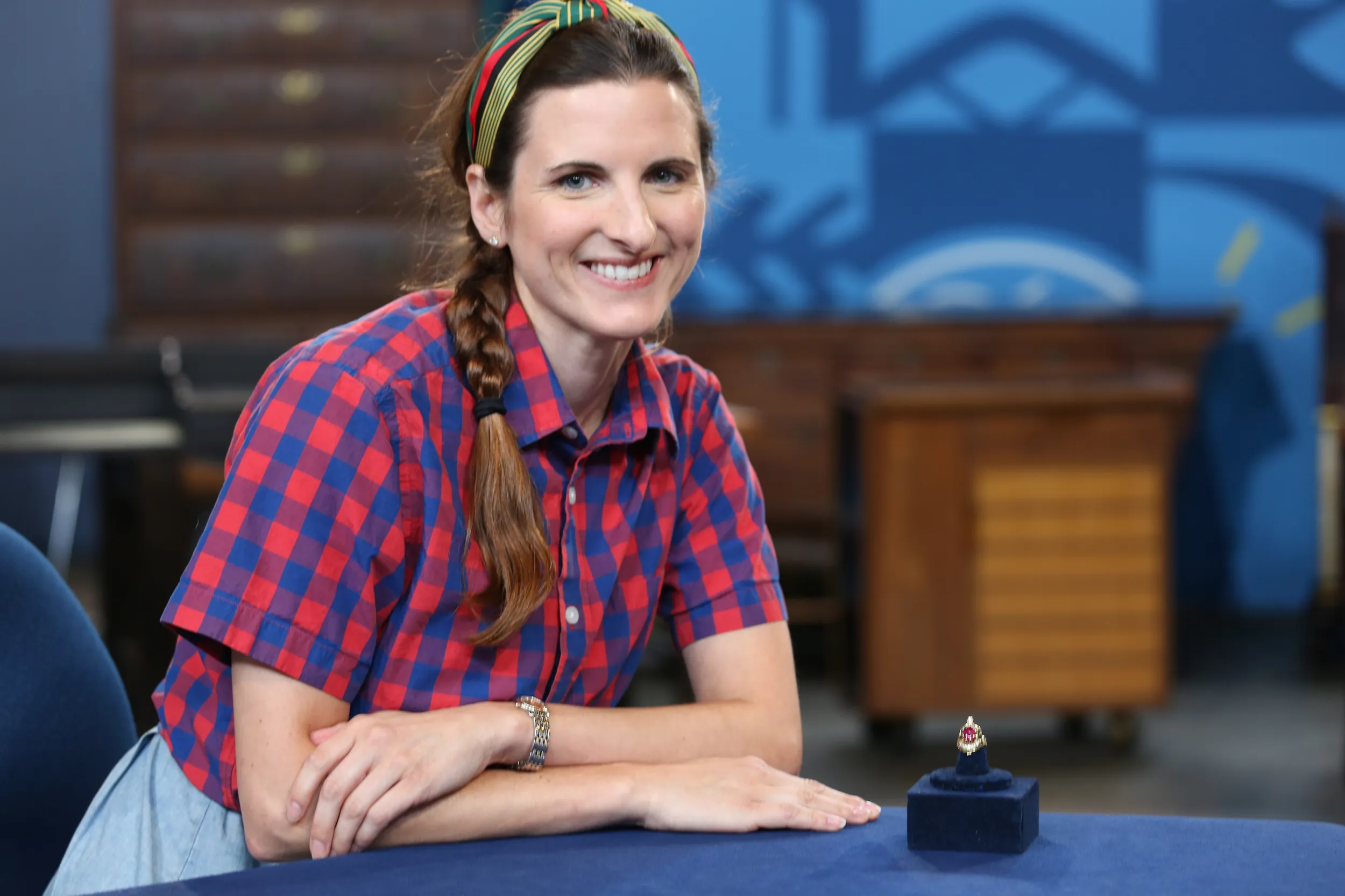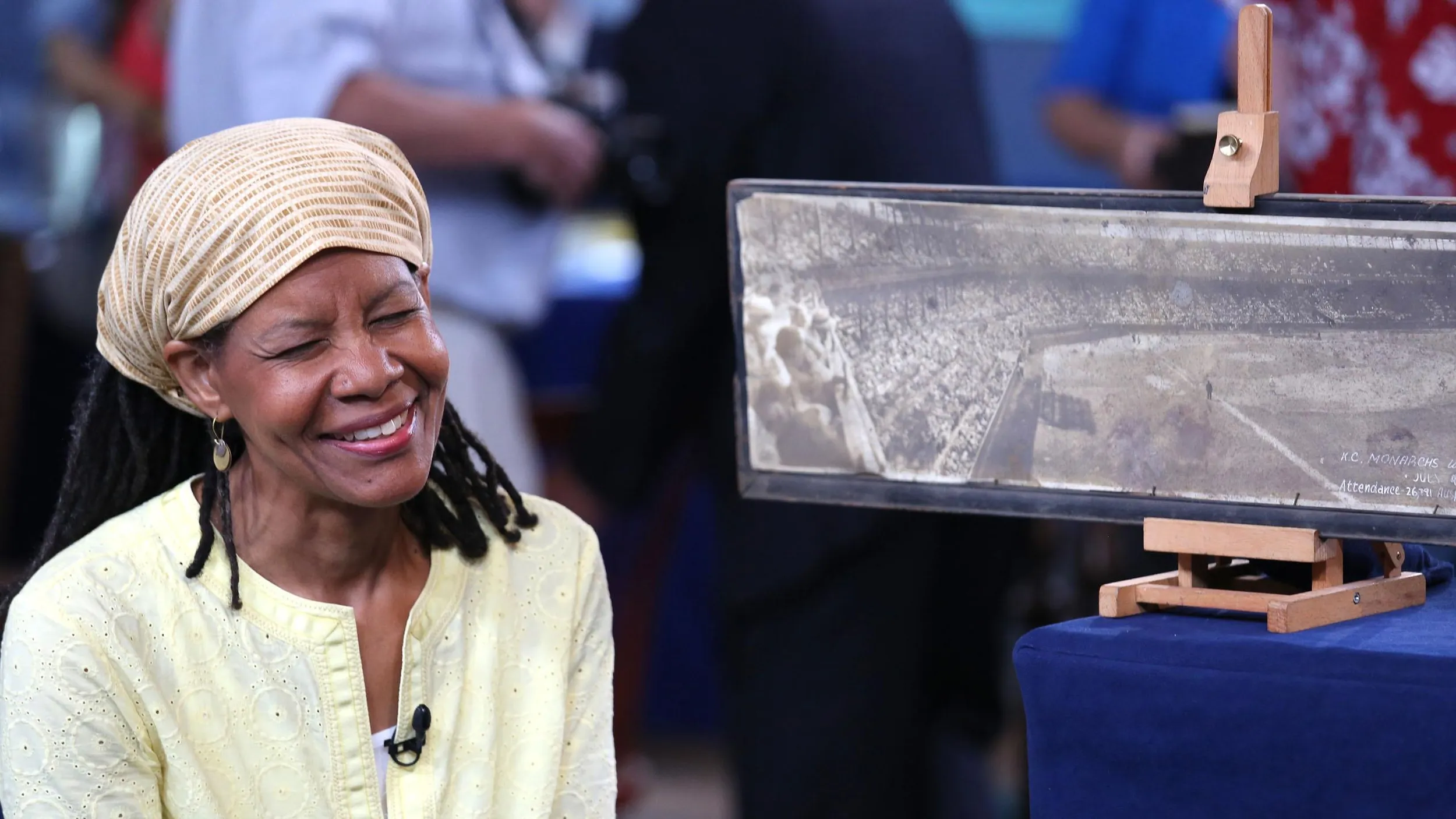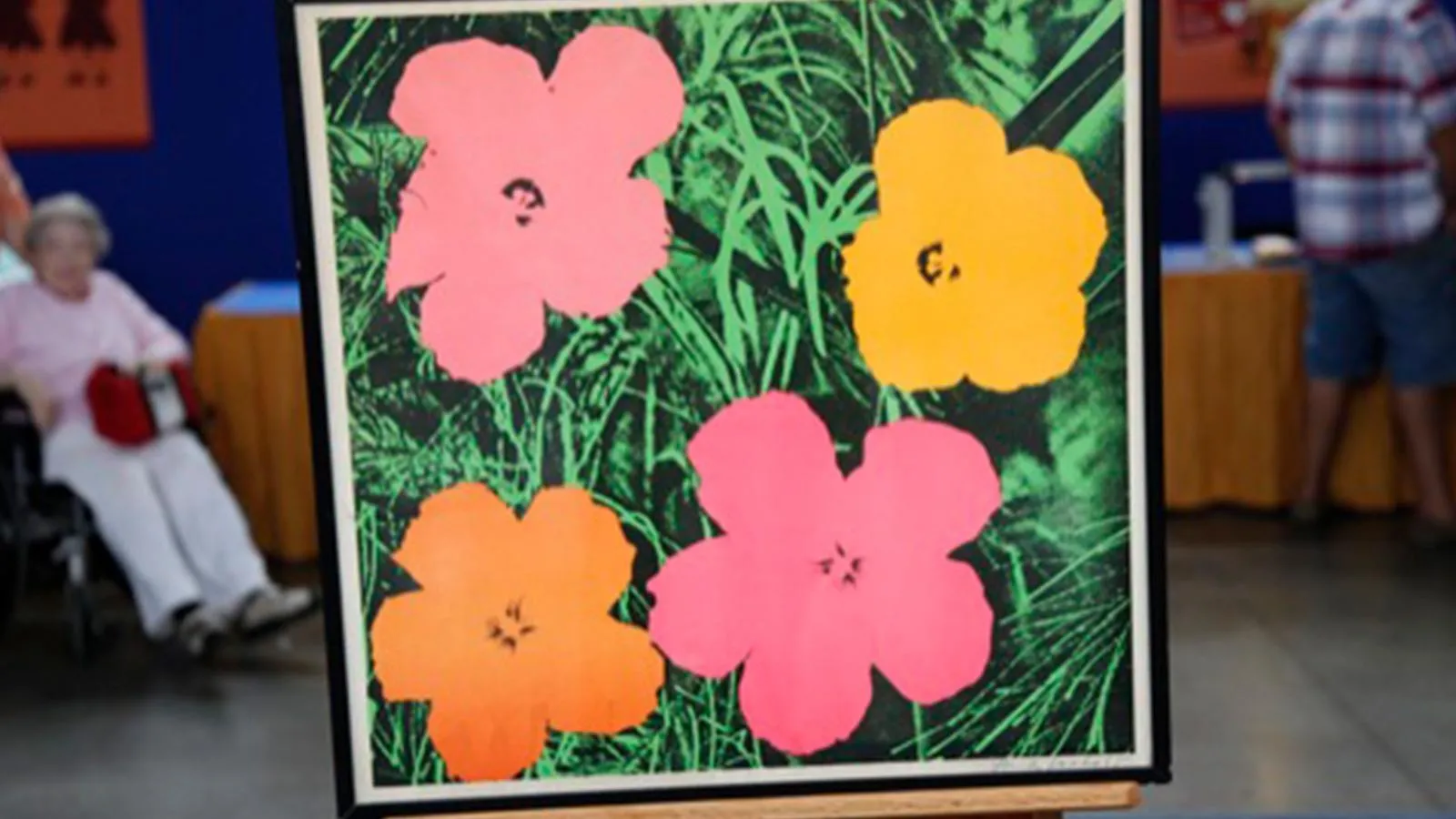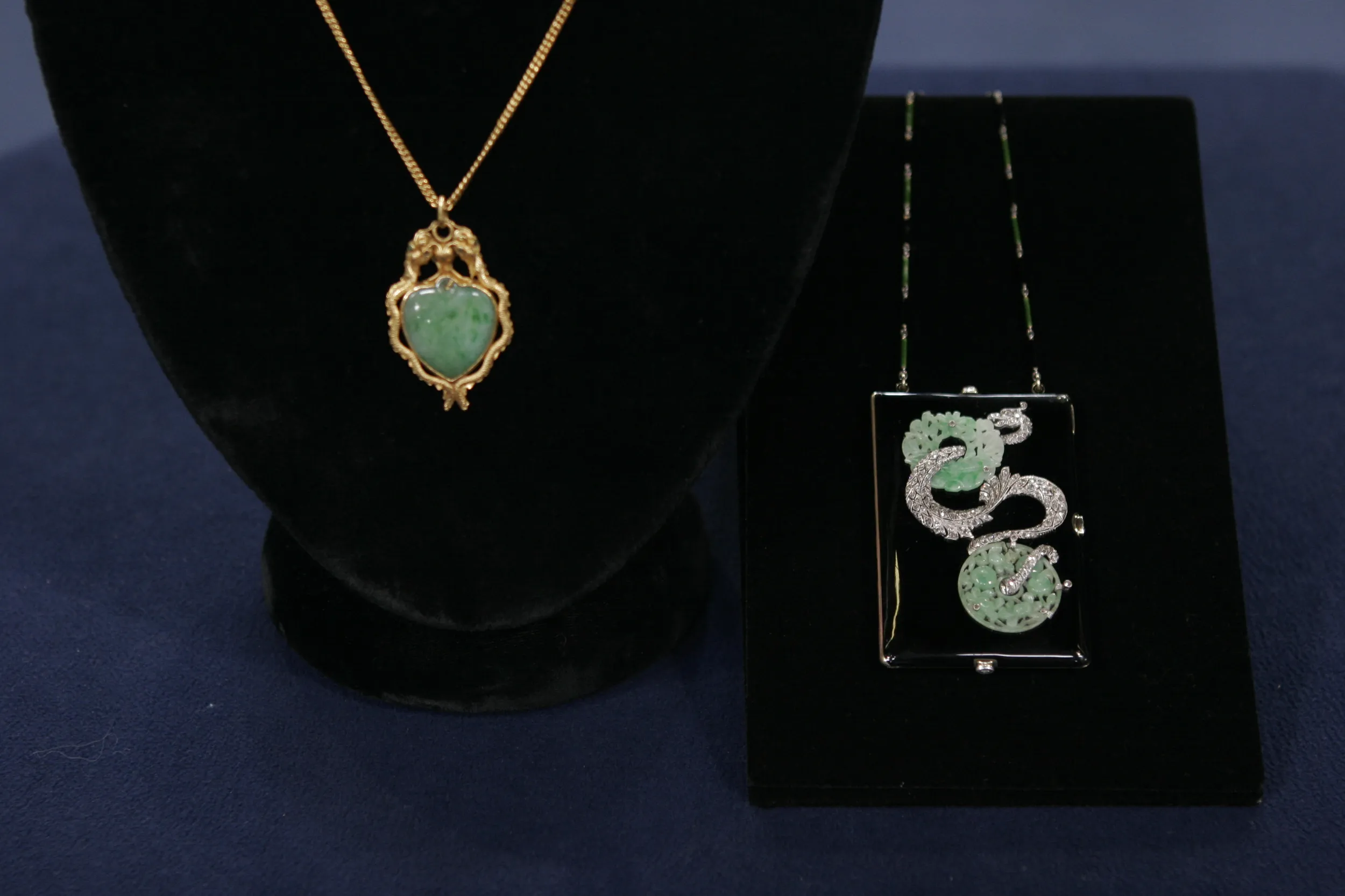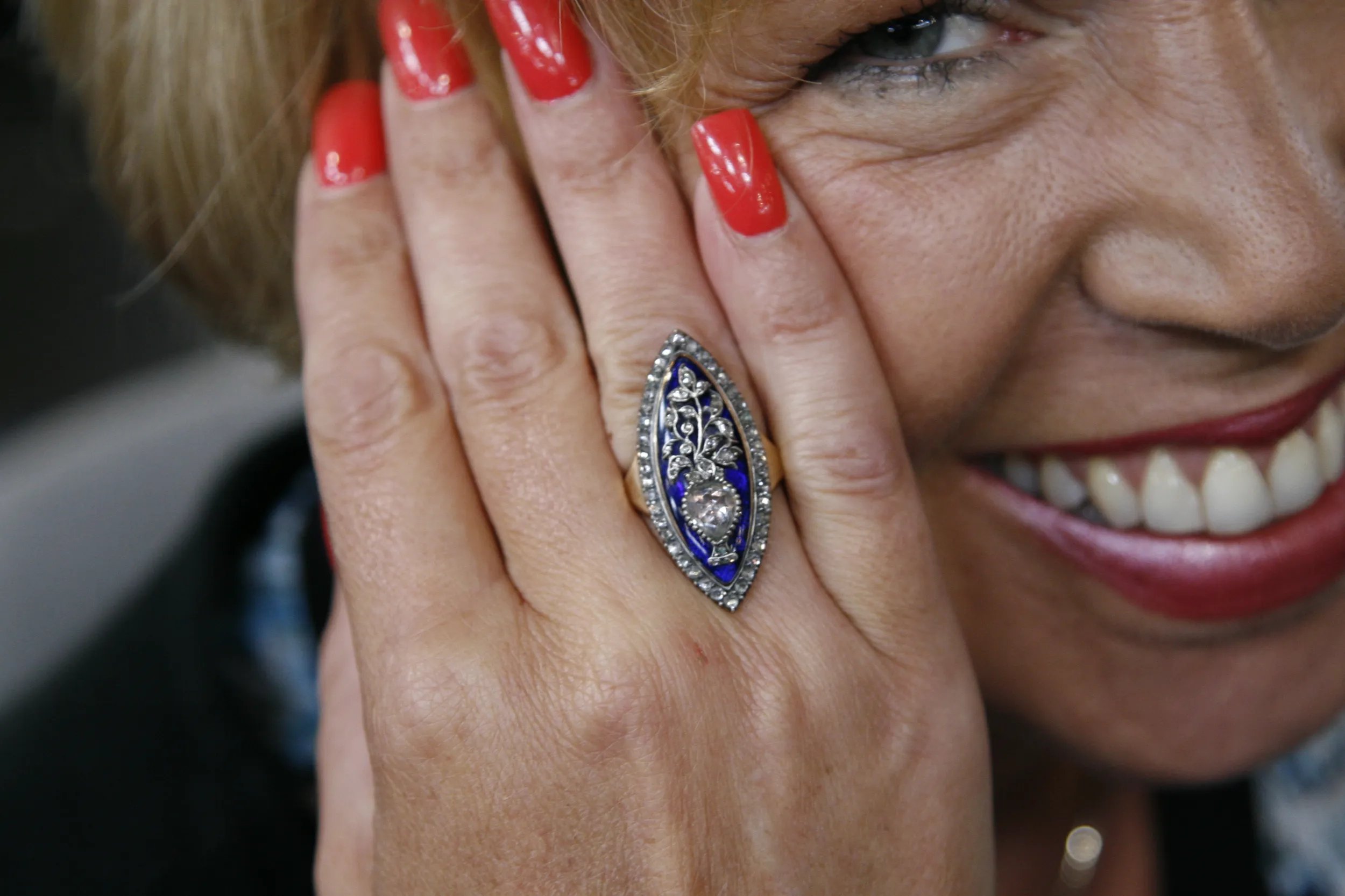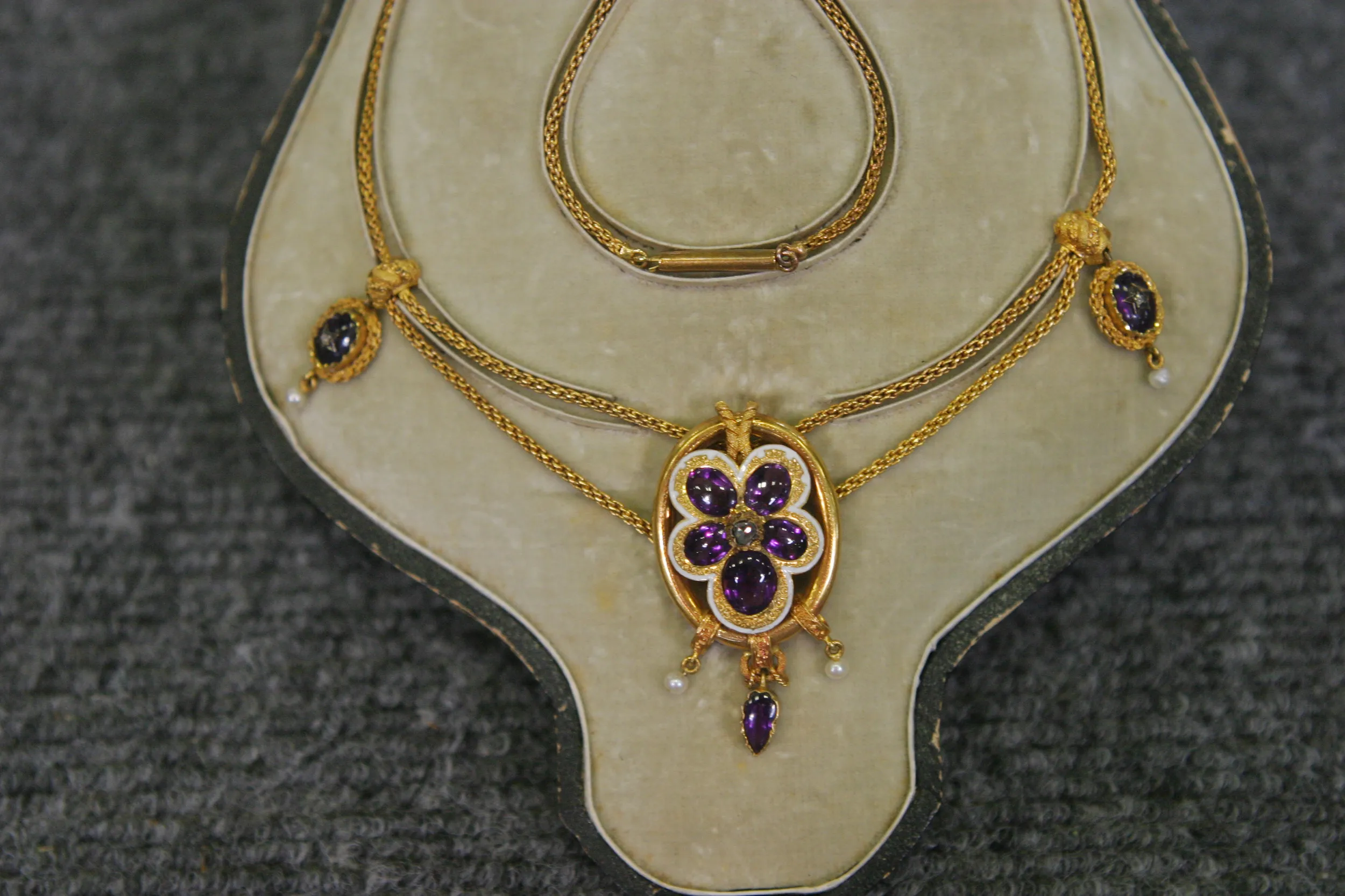GUEST: So it was maybe, like, a few years ago. My parents live out in the country, a couple of hours from St. Louis, and it was at an estate sale. Just, I thought it was really cool-looking, the colors. It was about $200.
APPRAISER: What you have here is an 18-karat yellow gold enamel diamond and ruby ring. It's from the Art Nouveau period...
GUEST: Mm-hmm.
APPRAISER: ...and it probably dates to 1905.
GUEST: Oh.
APPRAISER: The ring itself is beautiful for what it is.
GUEST: Yeah.
APPRAISER: For a period ring. It has a really nice look to it. I would say, just the ring alone...
GUEST: Right.
APPRAISER: ...is worth about $2,000 to $3,000.
GUEST: Whoa.
APPRAISER: But inside is a very clear signature, "Marcus & Co., 18 karat." And you can see it right here. Marcus and Company was a very prominent New York maker. They were founded in 1892 and were around until about 1960. Herman Marcus immigrated to the United States from Germany in the middle of the 19th century and worked for Tiffany and Company. He then went off on his own and formed Marcus and Company. This is very characteristically Marcus.
GUEST: Ooh.
APPRAISER: It's Mughal-designed.
GUEST: Yeah.
APPRAISER: So sort of Indian-inspired, which you can see.
GUEST: So cool.
APPRAISER: The shape looks like a sultan's turban, and the colors and the material, also very Mughal-inspired.
GUEST: Mm-hmm.
APPRAISER: The Art Nouveau period was inspired by nature. There was a lot of Orientalist interest.
GUEST: Mm-hmm.
APPRAISER: And that's very clear here. The center stone is a ruby. It's a cabochon ruby...
GUEST: Oh, okay.
APPRAISER: ...which means that it's smooth over the top, so not faceted. And it has a very rich pink hue. So rubies come in a range of colors from red to pink.
GUEST: Mm-hmm, mm-hmm.
APPRAISER: The pinker saturated rubies, like this, are most often from Burma.
GUEST: Okay.
APPRAISER: So this I would characterize as a Burmese ruby.
GUEST: Okay.
APPRAISER: Because it was made by Marcus and Co., that makes me that much more certain that it is indeed a Burmese ruby.
GUEST: Oh, okay.
APPRAISER: Because they would be using the highest quality of goods available to them at the time.
GUEST: Sure-- ooh, yeah.
APPRAISER: Historically, with trade between Burma and the rest of the world...
GUEST: Mm-hmm.
APPRAISER: Burmese rubies couldn't be exported.
GUEST: Exported.
APPRAISER: So there was a hold on them.
GUEST: Right.
APPRAISER: Therefore, there aren't very many of them on the marketplace today. The gorgeous green enamel work...
GUEST: I love that.
APPRAISER: ...is also very characteristic of Marcus and Company. They were enamel masters.
GUEST: Yeah, they're...
APPRAISER: There are beautiful, very bright diamonds, really used as accent stones, also common for Marcus and Co. for the day.
GUEST: Okay.
APPRAISER: I would say, at auction today, it would be worth between $7,000 and $10,000.
GUEST: Whoa! No way! Oh, my gosh. Wow. Whoa, I got chills.
APPRAISER: So I'd say that was a pretty good buy. (both laugh) It does have a chip. Because of what it is, the chip doesn't make it worth any less.
GUEST: Thank you.
APPRAISER: Of course!
GUEST: Day-maker! (both laughing) Got to insure that, honey.
APPRAISER: Yeah, absolutely, and for insurance, often double.
GUEST: Okay. Yeah?
APPRAISER: I mean, I would say for an insurance value, closer to $20,000 would be reasonable.
GUEST: Wow.

